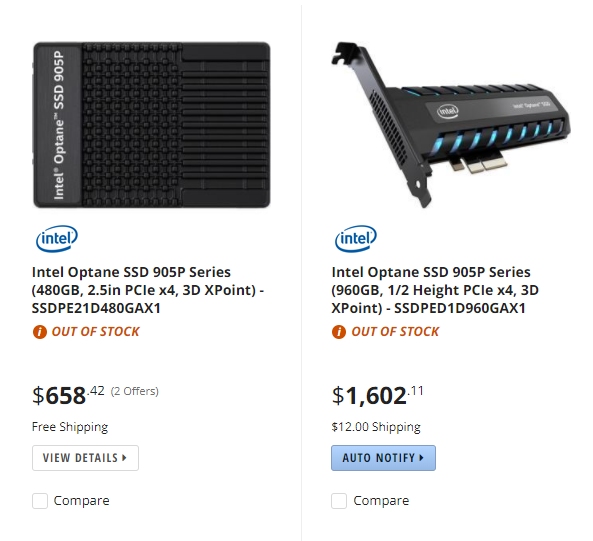Intel Optane SSD 905P Appears Online: M.2, LEDs And A New Controller
The Optane SSD 900P launch left us scratching our heads as one question lingered. What happened to the LED version that appeared in a leaked slide several months prior to our review?
Over the weekend, several new Optane SSD SKUs and their images appeared online at Newegg, Tiger Direct and many other online stores. The LED add-in card version was among the new products that also see a name change to Optane SSD 905P.
Also this week, ASRock started uploading images with the Optane 905P product name but instead of the usual add-in card and U.2 form factors we've already seen, ASRock thinks there is a new M.2 form factor drive coming soon. If that wasn't enough Optane news, we keep seeing a part number on sale for an Optane Memory drive available to OEMs with 64GB.
Optane SSD 905P Add-In-Card
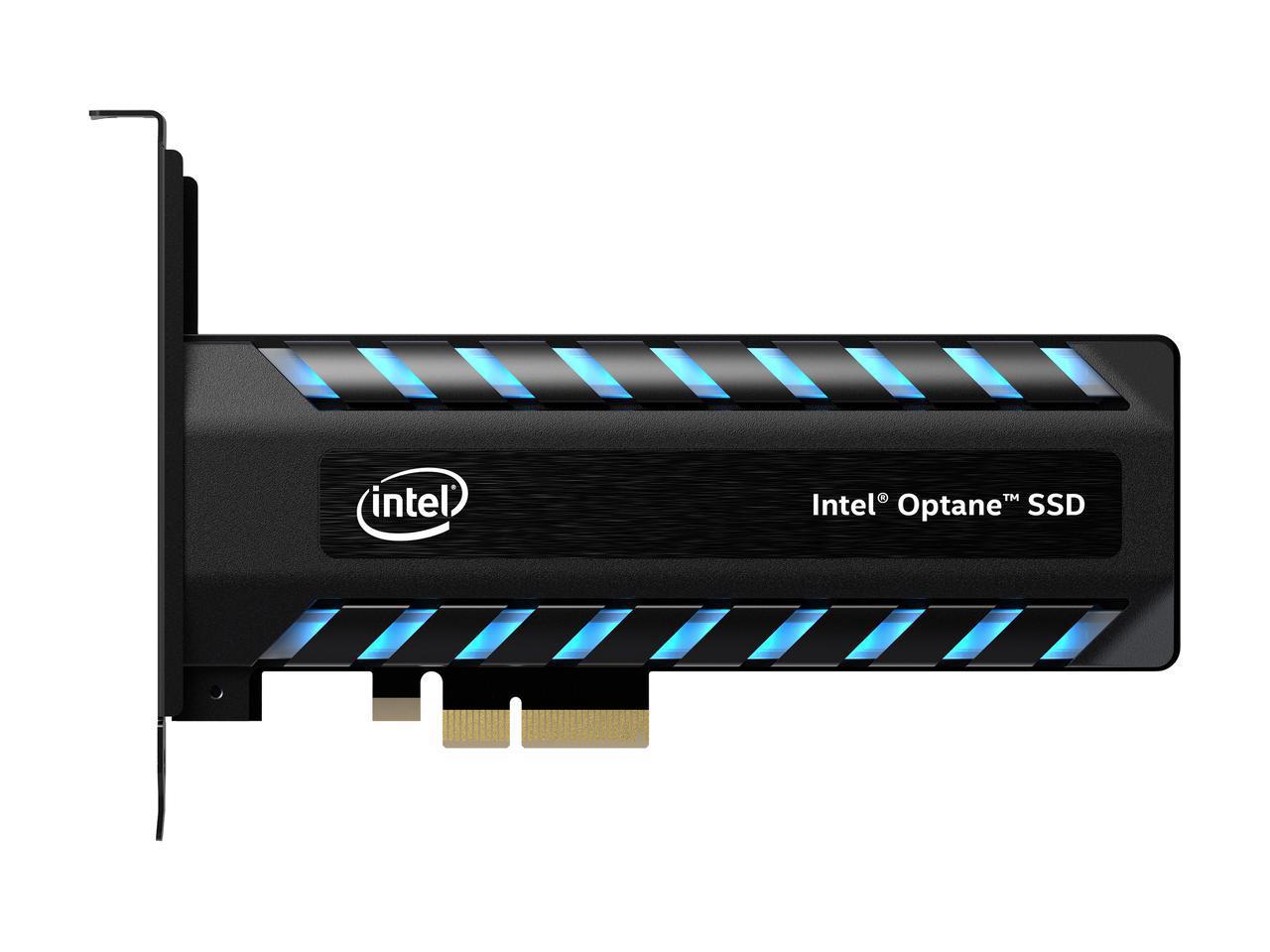

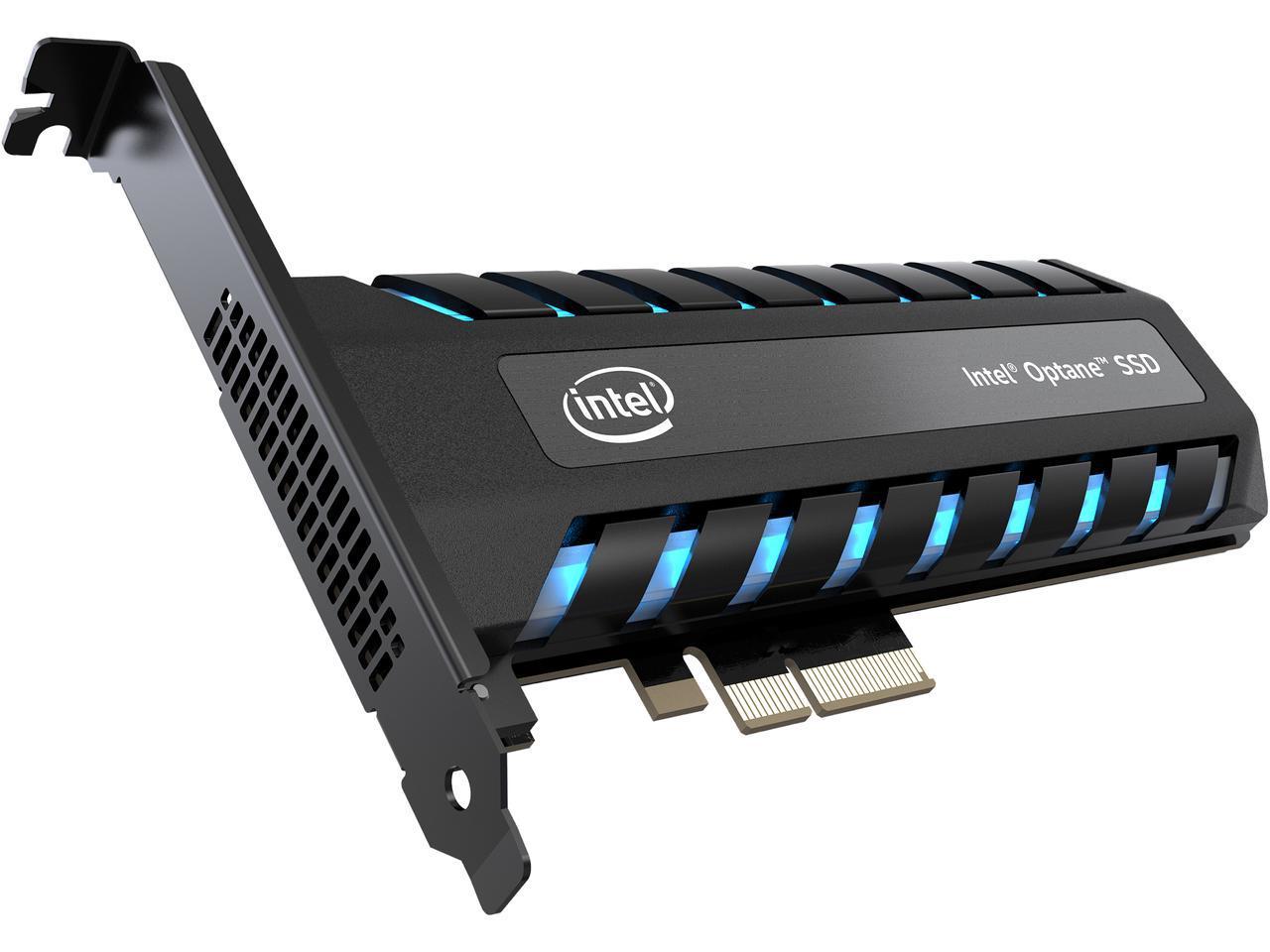
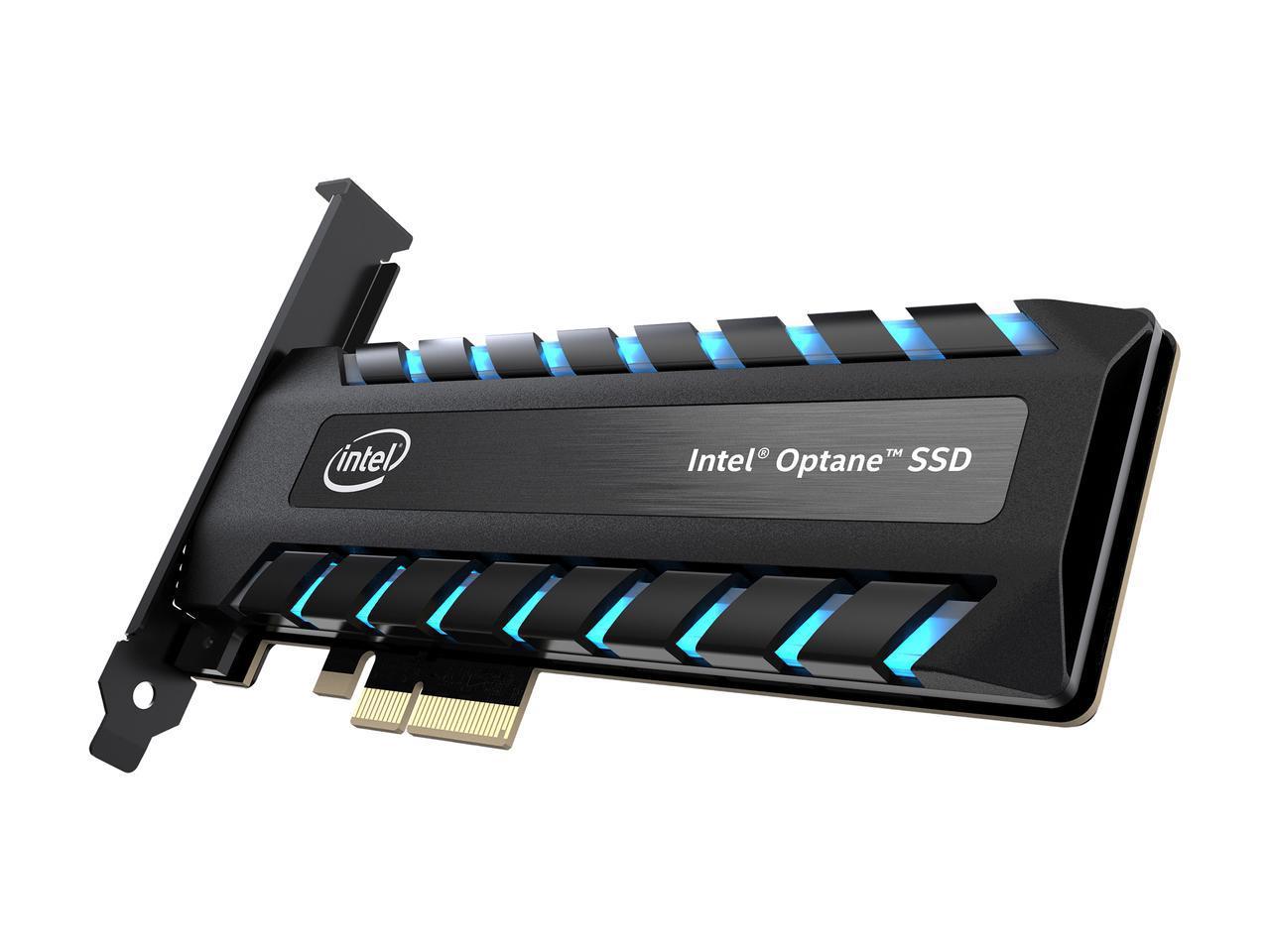
Let's start with the fabled Optane SSD 9 Series add-in card, which has plasma blue LEDs under two tubular difusers on either side of the heatsink. This first appeared online in a leaked slide but was missing from the initial 900P launch. The drive first appeared in public in early April at a trade show in Tokyo. We didn't have a lot of information nor anyone to confirm the new Optane SSD 905P name so we sat on the story. This week, we received some confirmation in the form of pictures, limited information, and some common sense.
The 905P name came back up in a big way with several reliable stores listing two versions, an add-in card and a U.2 SKU in a capacity we haven't seen before in that form factor. So far we've spotted the 905P in 280GB, 480GB, and a new 960GB capacity that was not released in the initial 900P launch. We know Intel has product numbers for two new sizes, 960GB and a massive 1.5TB, thanks to two documents from Intel.
The very limited information available shows some differences between the 900P and 905P. We used the data available for the add-in card to compare and contrast these two SKUs. The 900P uses 5 watts at idle but the new 905P bumps that up to 7 watts. The operating temperature also changes from 0 -75C to 0-85C. The maximum shock resistance moves from 50G to 1000G, a massive improvement.
Optane SSD 905P U.2

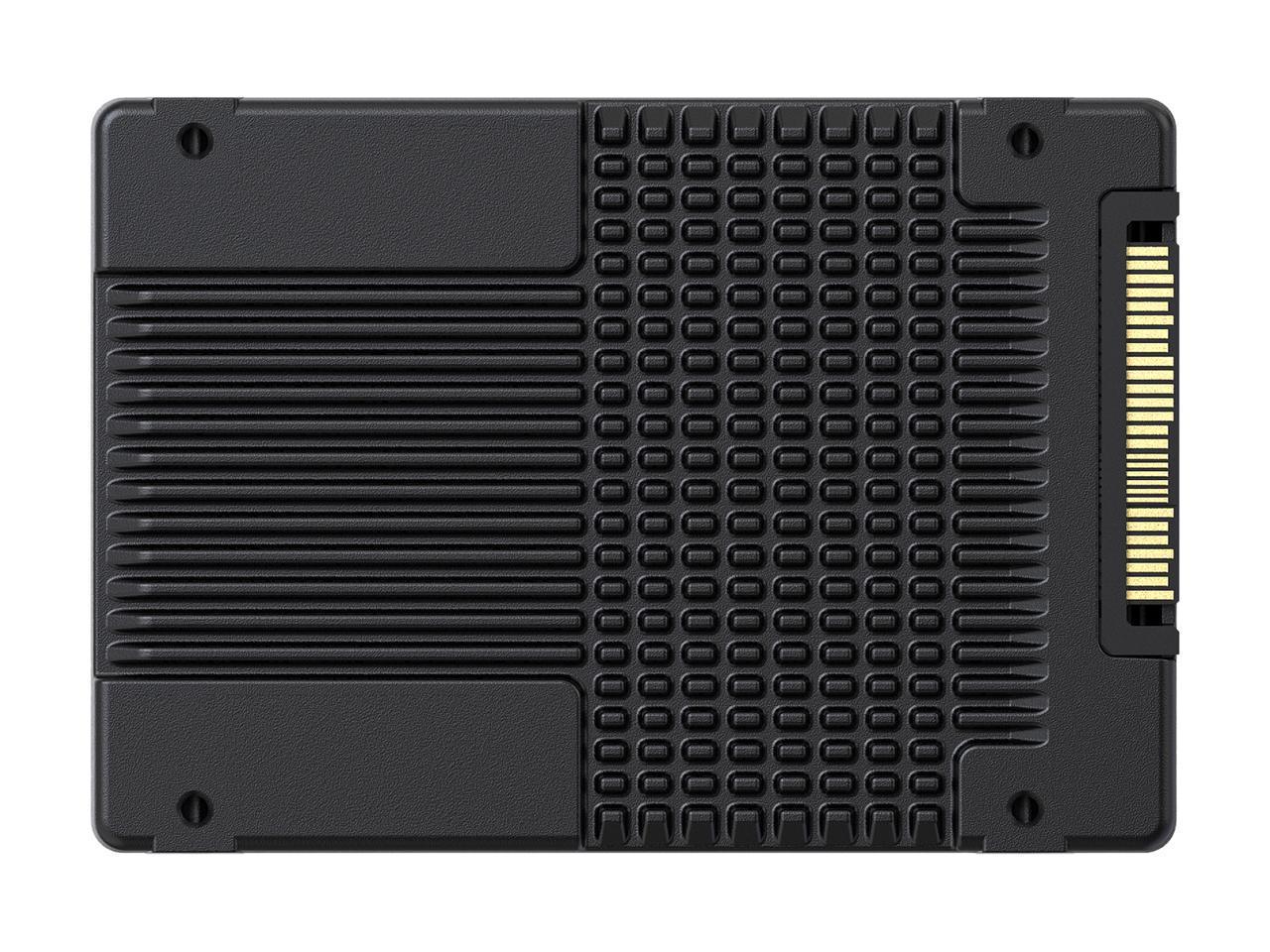
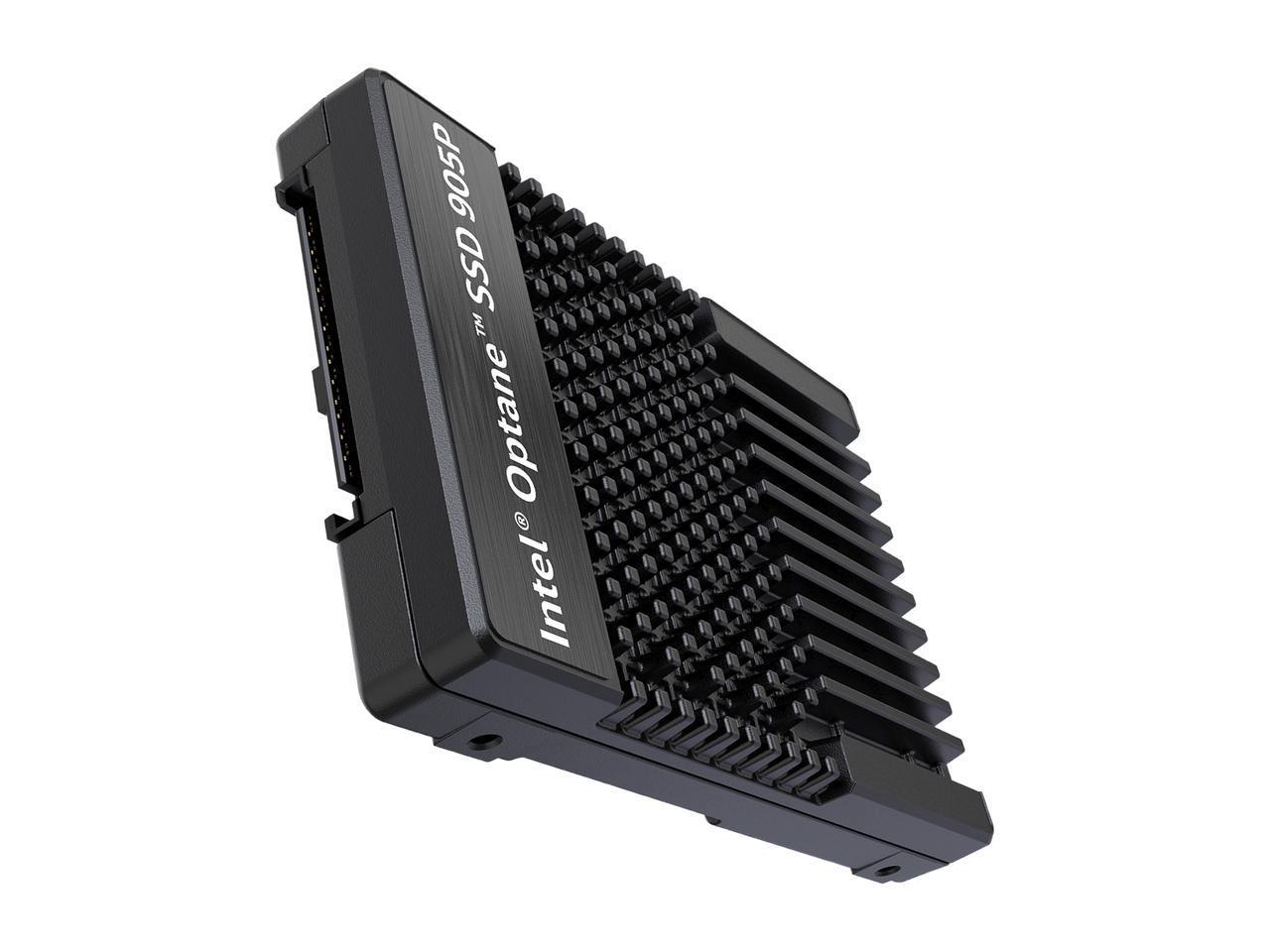
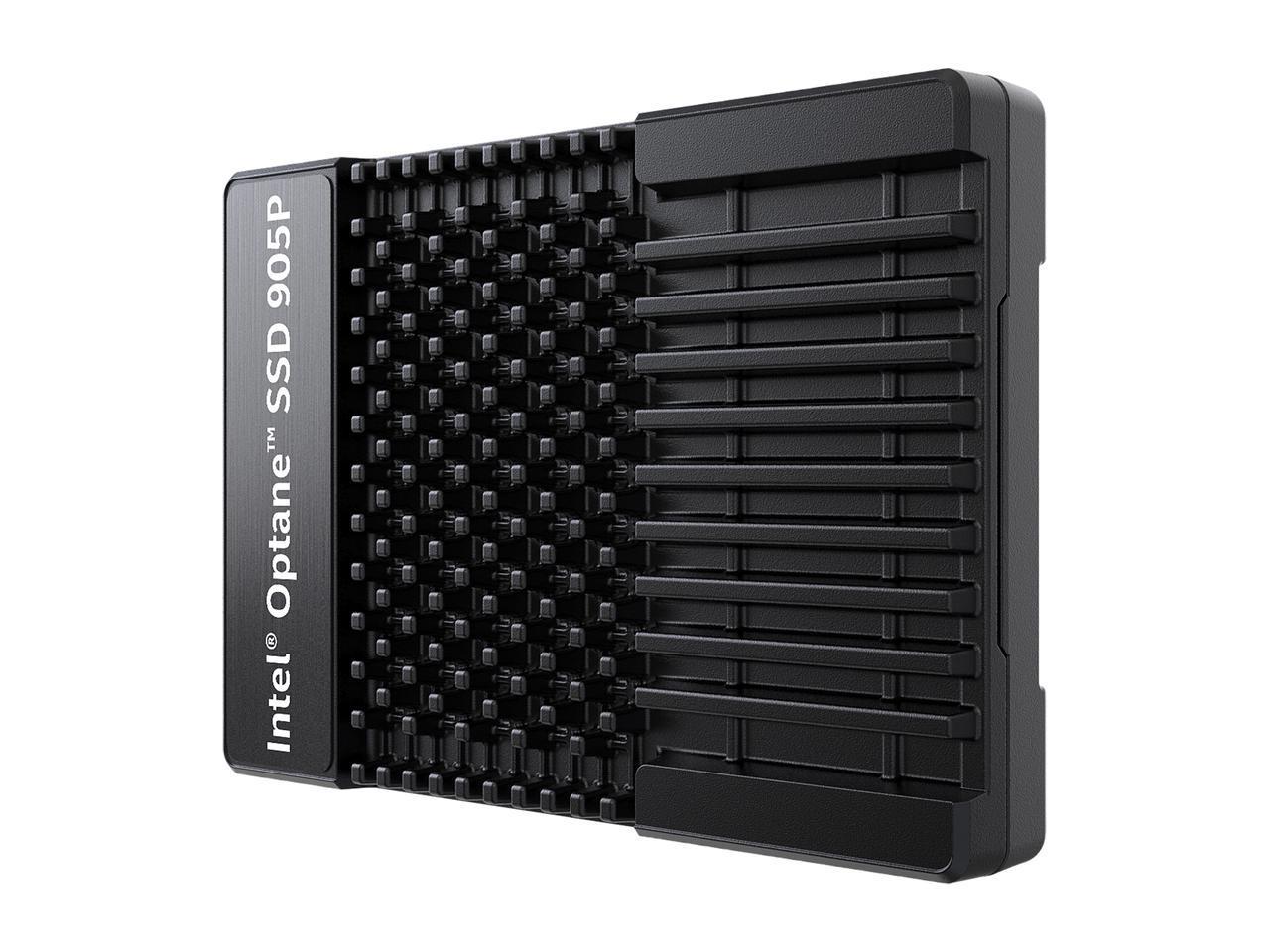
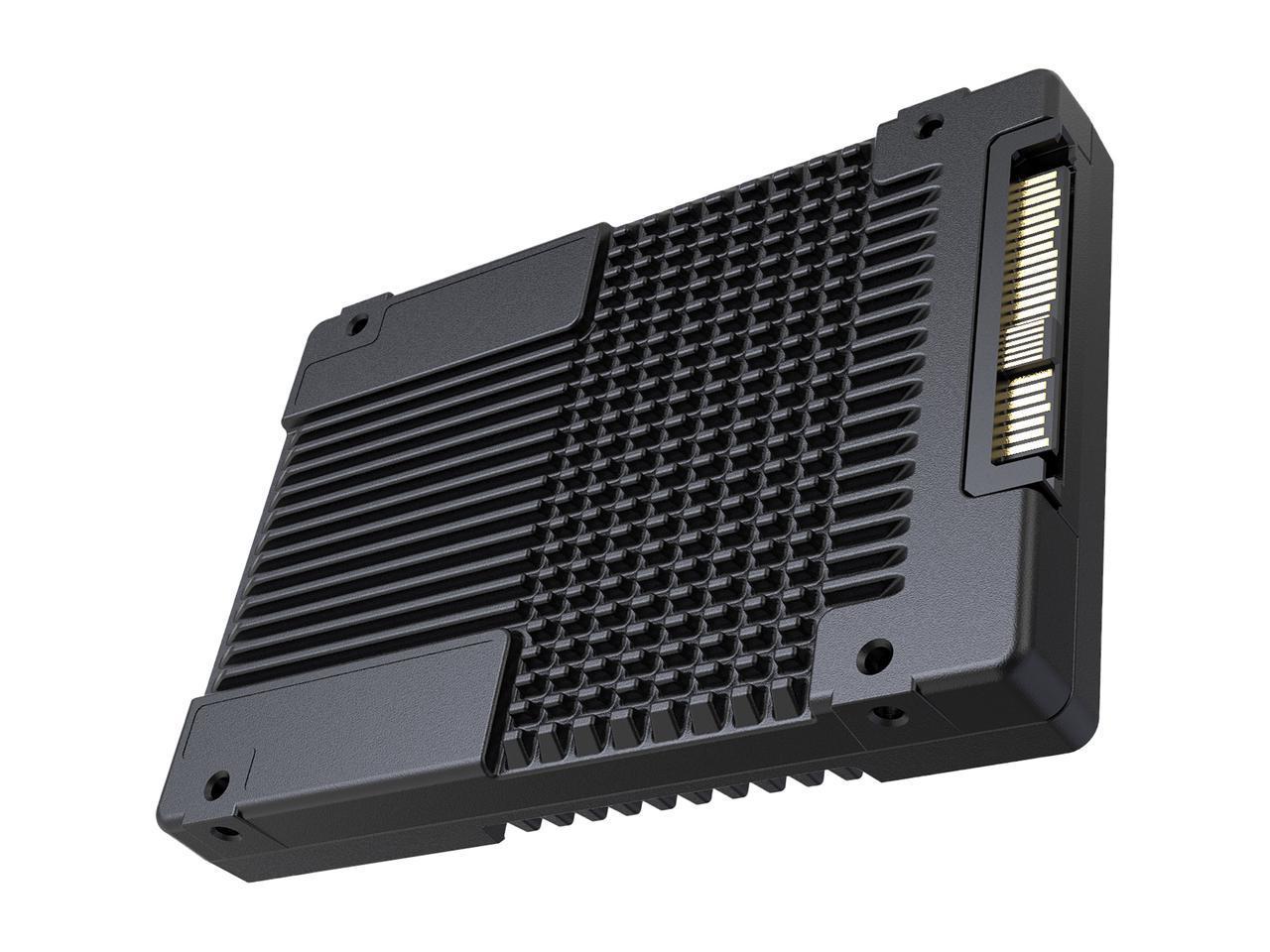
We also spotted a new Optane SSD 905P U.2 SSD. This one doesn't have the discotheque LEDs but is sure to be the life of your storage party.
Get Tom's Hardware's best news and in-depth reviews, straight to your inbox.
Intel never shipped the 900P U.2 in a 480GB capacity. We were told to expect a product like this in the future but as of today it hasn't shipped. We will talk more about this later in this article.
Optane SSD 905P M.2?
Like the announcer says on late night TV, "but wait, there's more!"
ASRock seems to know a little more about the new 905P than the online retailers do. We found two images on the ASRock website that show the Optane SSD 905P in a new M.2 22110 form factor (one, two). Last month Intel displayed the P4801X M.2 22110 at the OCP Summit in San Jose.
The drive features a new 7-channel controller that is physically smaller than the one used in the original 900P and P4800X. We've speculated in the past that Intel used an Altera controller for the Optane products. Prior to Intel purchasing Altera, the company announced a new SSD controller. We spoke with the technology company about the controller briefly over the phone but soon after Intel acquired the company.
The controller on the Optane 900P and P4800X is physically too large to fit on a M.2 form factor card, because the footprint is actually wider than 22mm. The upcoming P4801X M.2 22110 (22mm wide, 110mm long) features a new controller with some space to spare.
We were told that the controller features the same 7 channels to the 3D XPoint memory. There are seven packages on the card, each with four 3D XPoint die for a total of 448GB of memory of which 375GB is available to the user as storage space.
The display at OCP Summit was not a product announcement so Intel would not disclose performance or power specifications.
It wouldn't make sense for Intel to do a top to bottom refresh of the 900P series that came to market last December, just five months ago. An optimized controller would be enough for Intel to run a partial refresh. With it, we may see reduced power consumption, higher performance, and as we already know, smaller form factors.
64GB Optane Memory For OEMs
We keep running across an Optane Memory 64GB part number on different websites. Optane Memory, the cache drive used to accelerate hard disk drive performance, came to market in 16GB and 32GB sizes and was the first consumer Optane-branded product.
Optane Memory uses a slightly different part number than the Intel 800P 58GB and 118GB. The 64GB part is all over the web from Newegg and Tiger Direct to EBay. We've yet to find a retail product SKU for the 64GB drive but it does exist for those with a desire to experiment with the advanced cache technology. In our testing, all Optane branded products will work as a cache drive using the special Intel software and driver combination on supported 200 and 300-Series chipset motherboards. The new Rapid Storage Technology (RST) 16.0.2.1086 driver allows users to accelerate secondary storage volumes with this cache.

Chris Ramseyer was a senior contributing editor for Tom's Hardware. He tested and reviewed consumer storage.
-
milkod2001 Average performance, huge price tag. Not even Intel badge is going to fool customers if there are better or much cheaper options out there.Reply -
Brian_R170 Reply20928886 said:Average performance, huge price tag. Not even Intel badge is going to fool customers if there are better or much cheaper options out there.
Yes, it's expensive. OK, it's really expensive, but the performance is not average. Look beyond the marketing data that the NAND SSD manufactures want you to think is important. If you look at data that really matters (i.e. ignore every piece of data with queue depths > 2 and sequential-only workloads that don't exist in the consumer space), the performance is incredible.
-
leoscott Reply
Still way overpriced. I doubt that the average consumer would even notice a performance difference. It would be too expensive at 1/2 the current prices and only worth considering when the prices drop 75%+20930044 said:20928886 said:Average performance, huge price tag. Not even Intel badge is going to fool customers if there are better or much cheaper options out there.
Yes, it's expensive. OK, it's really expensive, but the performance is not average. Look beyond the marketing data that the NAND SSD manufactures want you to think is important. If you look at data that really matters (i.e. ignore every piece of data with queue depths > 2 and sequential-only workloads that don't exist in the consumer space), the performance is incredible.
-
emv WOW: Bigger fatter more power and flashing lights. Intel will sell 100 or 200 of these by the end of the year.... 500 Maybe. I am literally embarrassed for Intel NSG group.Reply
its meant for the consumer who wants to spend a lot of money for minimal impact -
dante.ironheart I have t disagree. 4k writes, no cache yet near ram performance,and the insane longevity.Reply -
CRamseyer You guys really need to get an Optane drive even if it's one of the lower ones. The technology is legit. It's not the same as going to a SSD from a HDD but it's still a step beyond flash.Reply
It's expensive because the die is only 16GB, 1/4 that of new 512Gbit (64GB) die flash coming online now. In time prices will come down but it will never have price parity with flash.
I just hope Intel increases the sequential performance with this release. For some it's just a number that doesn't have an impact on real world performance and to others it's the end-all be-all measurement of a drive's abilities. -
emv So Chris, there is a significant difference running MS Office between this and a Samsung 960? It costs 4x more so I assume everything actually runs in 4x less time :-) ... Intel isn't shipping any cost reductions anytime soon ... the price of NAND is dropping much faster than the price of Optane.Reply
